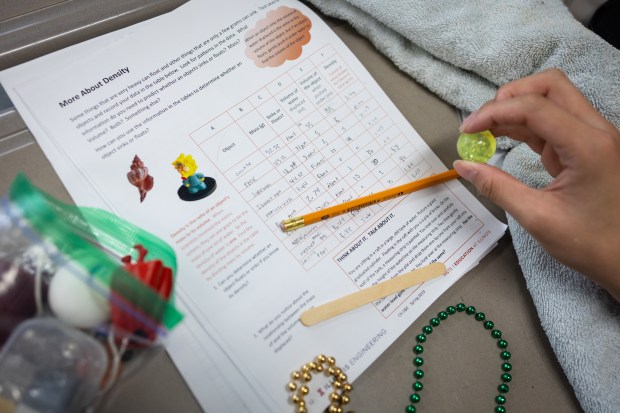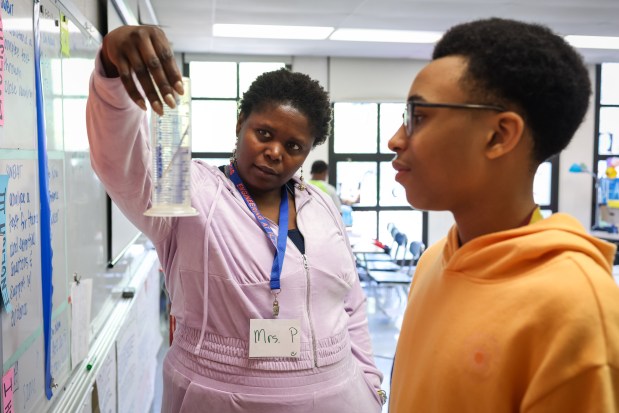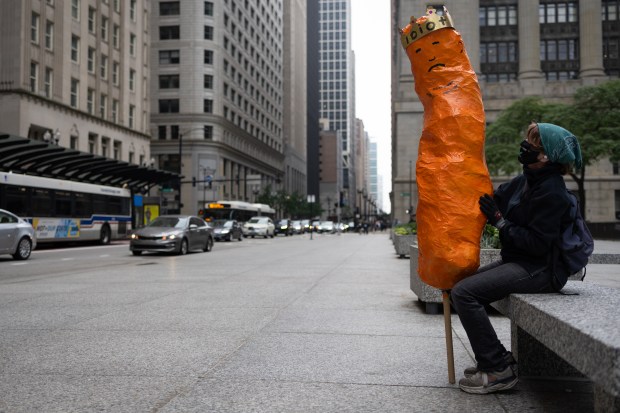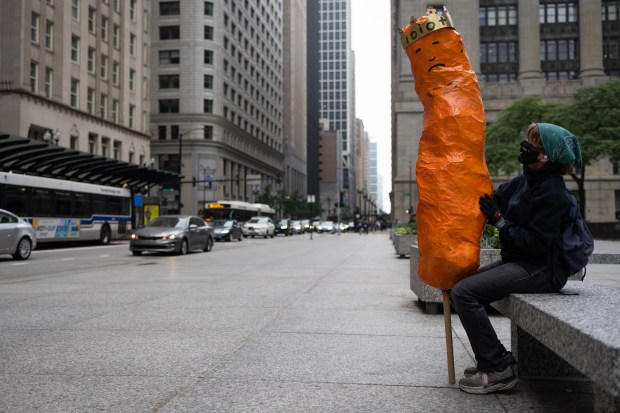Growing up in Englewood, Soyini Walton said she was directed into transcription and stenography classes while she watched her male peers walk around with slides and discuss algebra.
She always preferred science but said she wasn’t given the option to pursue it. At age 11, she remembers finding a dead bird and, out of curiosity, cutting it open with her dad’s razor.
“Nobody really said, Well, what are you passionate about? Because you probably could go into anything you want,” Walton said.
She worked as a teacher for years in her 20s before returning to Richard J. Daley and Kennedy-King colleges on the Southeast Side to enhance her math knowledge.
Now, almost 80, she sets an example teaching earth science and algebra classes at the Chicago Pre-College Science and Engineering Program, also known as ChiS&E, a nonprofit that offers enrichment classes on Saturdays and in the summer for historically underrepresented students to pique and motivate their interest in careers in science.
The program began serving first-grade students in 2009 and has expanded year by year. Today, ChiS&E collaborates with over 40 schools, both public and private, across Chicago, and is unique in that the students’ guardians are required to accompany them to the classes until fifth grade. The program has served 3,972 students since its founding, according to its coordinators.
The free classes are family-oriented and emphasize mathematics through projects like designing bridges and programming computers, breaking down systematic barriers such as limited exposure, financial constraints and underrepresentation in advanced classes.
While a 2021 Pew Research study reported “dramatic” growth in the number of science, technology, engineering, and mathematics graduates from colleges and universities since 2010, Black and Hispanic adults are still underrepresented among STEM college graduates compared with their share in the population. The study said Black workers make up 11% of all employed adults, compared with 9% of those in STEM occupations. Hispanic workers make up 17% of total employment across all occupations but just 8% of all STEM workers.
The blueprint for ChiS&E is modeled after a Detroit-based program that began in a basement at the University of Michigan in the ’70s, said Kenneth Hill, ChiS&E’s president and CEO. That Detroit program has worked with tens of thousands of students.
Hill has an extensive and wide-ranging background as a teacher, having worked in the Detroit public school system before moving to the Republic of Zambia in Africa, where he taught calculus and physics to high school students.
“This is a smaller program, but we’re going to get there,” Hill said, looking around a room of students gathered at Kenwood Academy High School last Saturday morning. “It’s high-quality.”
ChiS&E’s classes go beyond standard curricula, said Iyabo Pommells, 41, a former math and physics teacher who leads the Saturday physics class at Kenwood. It’s different from the usual introduction to STEM, Pommells said.
“There’s more time. There’s a lot of space to ask questions and interact with others,” said Pommells, whose full-time job is with the city of Chicago.
Walton, who calls Pommells her “protégé,” watched her draw a table on the board at the front of the classroom to chart the densities of different materials and whether they would float or sink if placed in water.
“Anything else you notice? What about what we wonder?” she asked the class of middle-school students.
Pommells said she discovered her love of math and science in high school and was inspired by Walton, a family friend. Pommells holds a degree in mechanical engineering from the University of Michigan and a mathematics degree from Spelman College in Atlanta.
“Seeing another Black woman doing that, it showed me that it was possible and that I could do it, too,” she said. “There are many times, especially when I was (in college), where I was one of the few women or Black people in the class.”
But because she’d had confidence in her abilities since she was young, she said she knew she “could do anything in any room that (she) entered.”
Gema Ramos, who attends Eli Whitney Elementary in Little Village, said she and her parents have been coming to the program since she was in kindergarten. Ramos, 13, wants to be a doctor.
“I like how we learn things that we wouldn’t in school,” Ramos said of ChiS&E.

Parents learn from going to class, too, said Tori Williams, 49. She attended the program with her 13-year-old son, Drelyn.
“Those classes helped me understand how important (science) is to just having a concrete understanding of the way the world works,” she said.
Drelyn was able to enroll at a gifted school in Chatham and is now a grade ahead in math. He just decided he wants to be a computer engineer, his mom said.
The ChiS&E curriculum inspired Williams, who is also the principal of Parkside Community Academy in South Shore, to apply for an unrelated $700,000 grant from Chicago Public Schools to focus on STEM. The money from the grant was used to build creative spaces and science labs, Williams said.
ChiS&E alumni have gone on to careers in nuclear engineering or psychology at schools like Yale University, Purdue University, Howard University and Spelman, said Jeffrey Johnson, the program’s chief operating officer.
“A strong foundation in mathematics builds confidence in young people,” Johnson said. “This sets up young people to be competitive, to get into the top colleges and universities, and in the top fields.”
The nonprofit relies on philanthropic support and has financial and programmatic partnerships with the University of Illinois Urbana-Champaign and Argonne National Laboratory.
Saturday morning, Walton smiled at the students as they explained the findings of their experiments to Pommells, who she watched grow into an engineer.
Walton expressed some concern about the program’s mission in the face of President Donald Trump’s attacks on diversity, equity and inclusion.
“Even though we have been getting funding from foundations, everybody is being affected by the changes,” she said.
She was a mechanical engineer for the city under former mayor Harold Washington before starting her own engineering company.
But she said she had to climb to be where she is now.
“Growing up, if I had had a program like ChiS&E … I would have been on my way a lot sooner,” she said. “Right now, (the program is) little known. We hope more people find out about it.”





